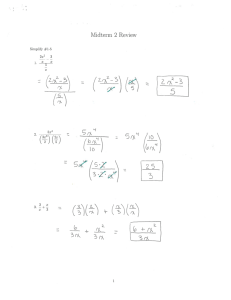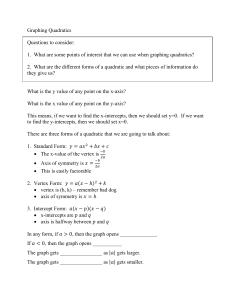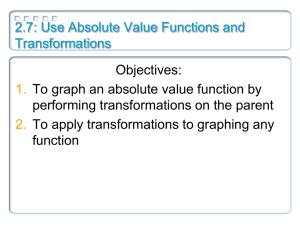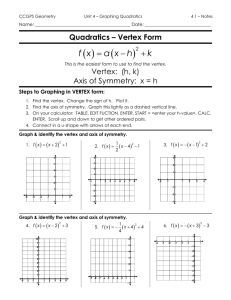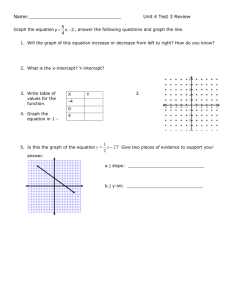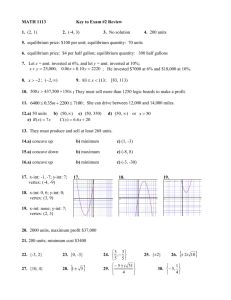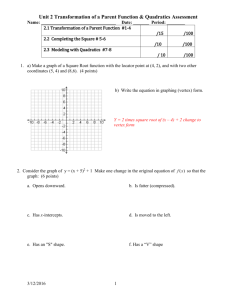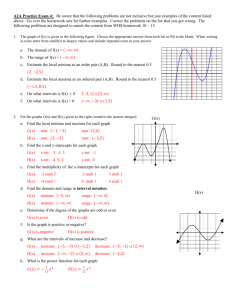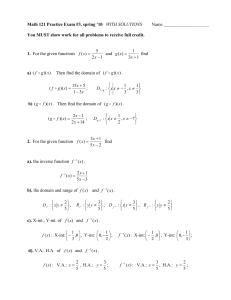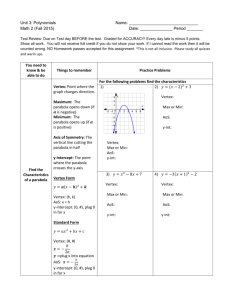Quad Linear Guided Notes
advertisement
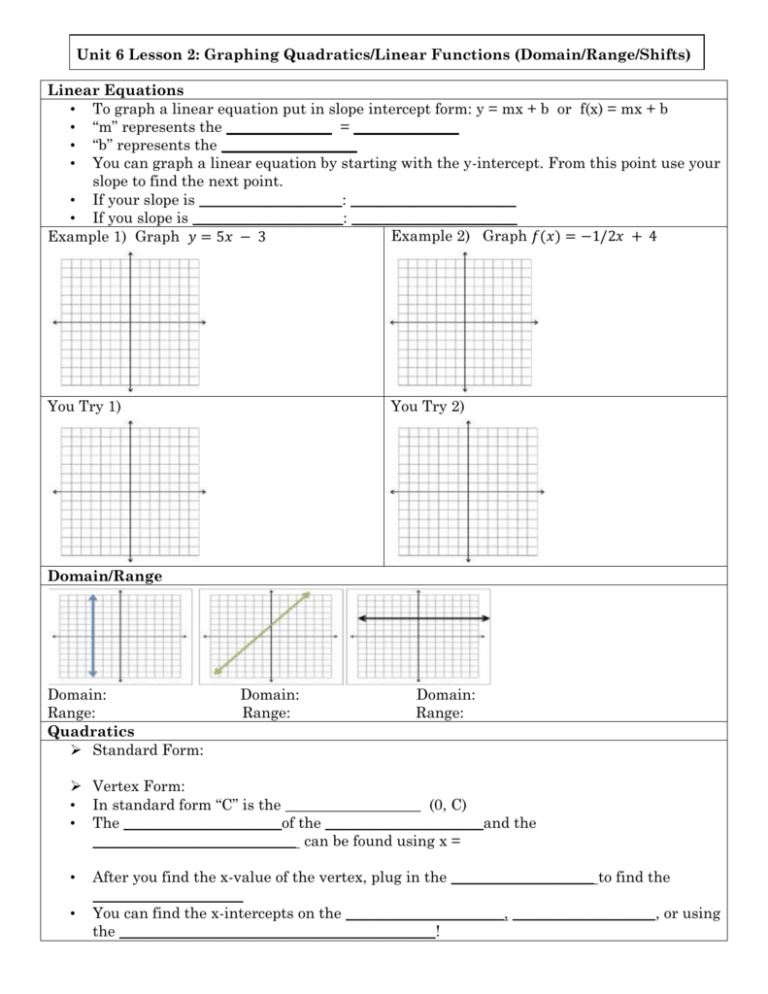
Unit 6 Lesson 2: Graphing Quadratics/Linear Functions (Domain/Range/Shifts) Linear Equations • To graph a linear equation put in slope intercept form: y = mx + b or f(x) = mx + b • “m” represents the ______________ = ______________ • “b” represents the __________________ • You can graph a linear equation by starting with the y-intercept. From this point use your slope to find the next point. • If your slope is ___________________: ______________________ • If you slope is ____________________: ______________________ Example 2) Graph 𝑓(𝑥) = −1/2𝑥 + 4 Example 1) Graph 𝑦 = 5𝑥 − 3 You Try 1) You Try 2) Domain/Range Domain: Range: Quadratics Standard Form: Domain: Range: Domain: Range: Vertex Form: • In standard form “C” is the __________________ (0, C) • The _____________________of the _____________________and the ___________________________ can be found using x = • • After you find the x-value of the vertex, plug in the ___________________ to find the ____________________ You can find the x-intercepts on the _____________________, ___________________, or using the __________________________________________! Example 1) Find the y-int/x-int(s), AOS, and vertex…GRAPH! f(x) = -x2 - 7x + 8 Example 2) Find the y-int/x-int(s), AOS, and vertex…GRAPH! f(x) = 4x2 – 6x + 1 You Try) Find the y-int/x-int(s), AOS, and vertex…GRAPH! Vertex Form A ______________________shift occurs when adding/subtracting ______________of the parentheses A ______________________shift occurs when adding/subtracting ______________of the parentheses Examples: List the transformations for the quadratics in vertex form…. 1) 2) Example: Graph the original function and the transformed graph, and then list the transformations… You Try List the transformations… 1) 2) Graph the original function and the transformed graph, and then list the transformations…
